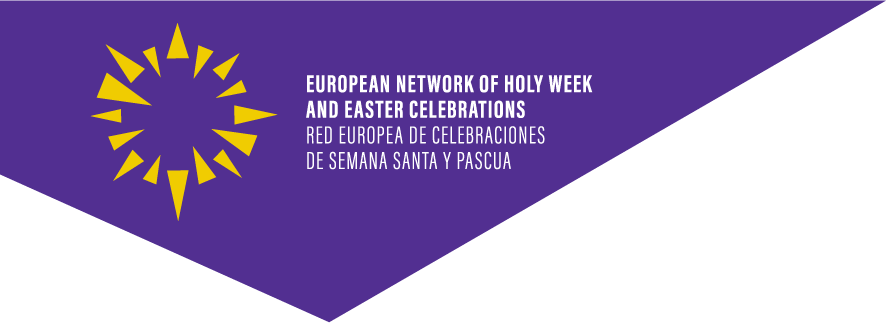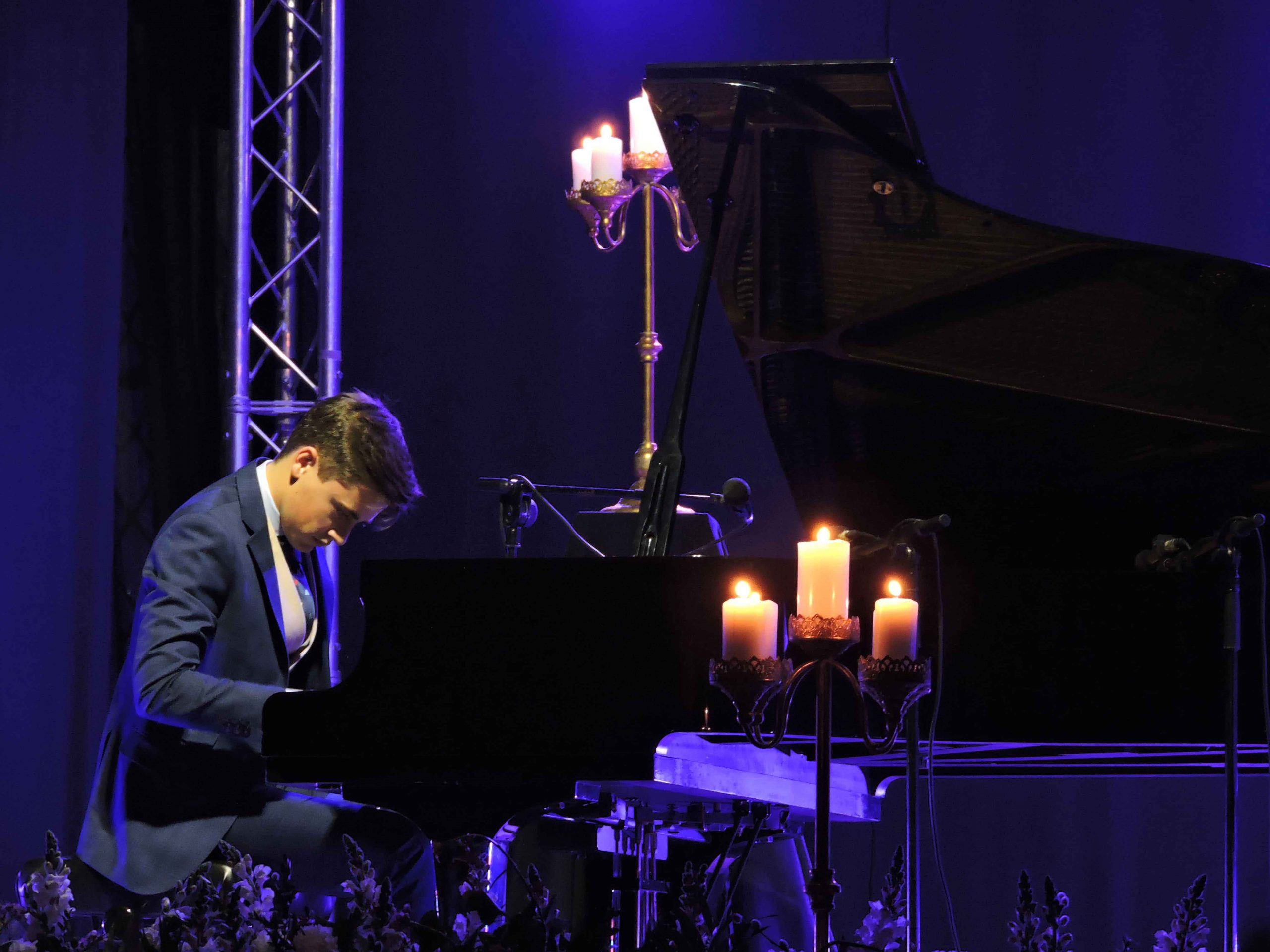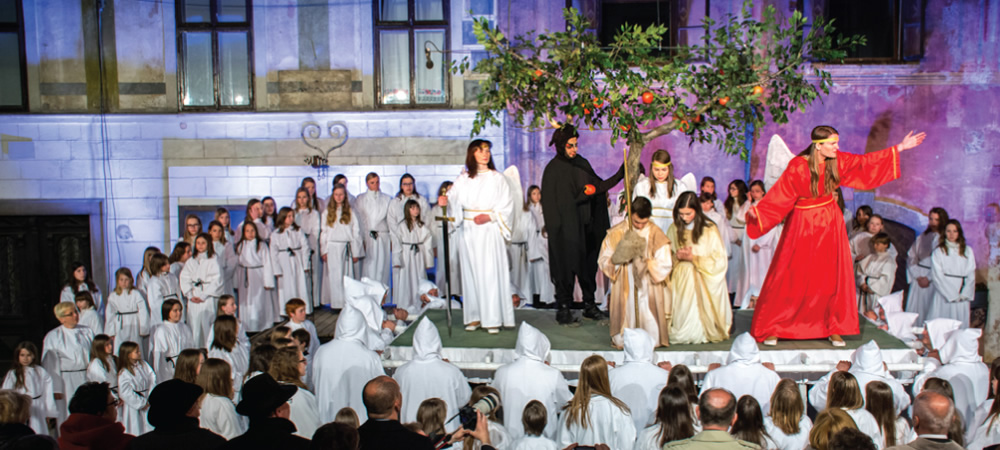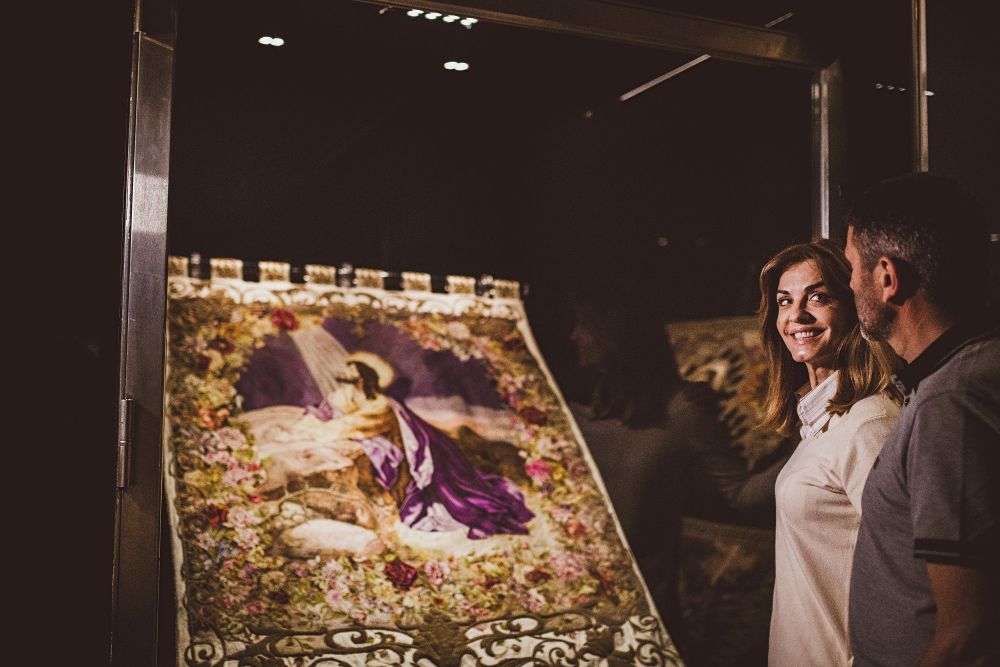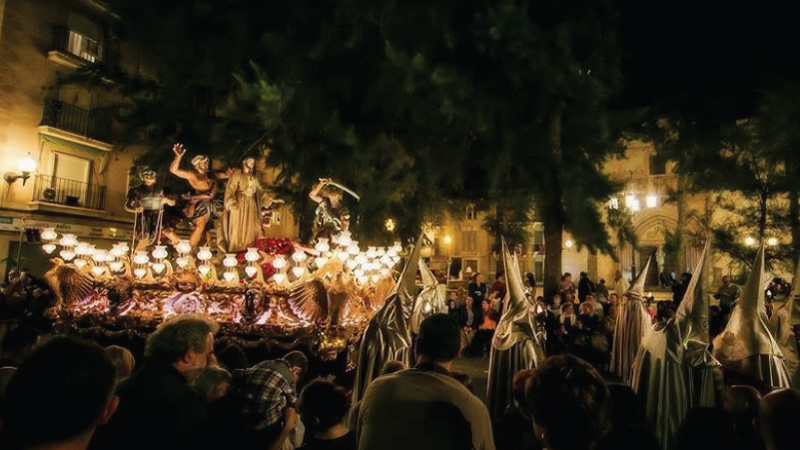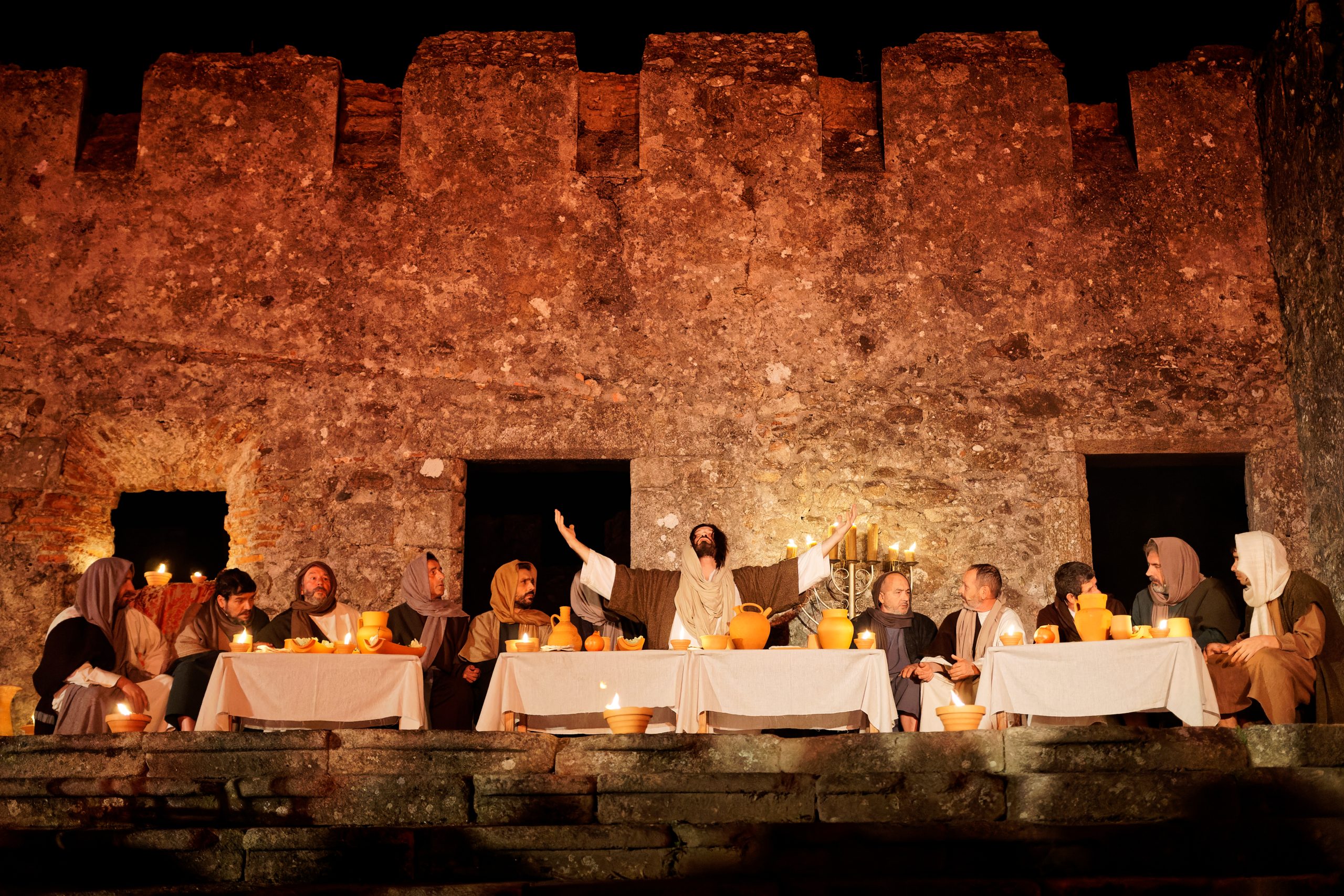
The peculiar Holy Week of Baena is characterized by the particularity of its brotherhoods and their clothing. The relevance of the characters that represent the Coliblancos and Colinegros Jews makes this celebration an event of undoubted appeal. One of the most significant elements of its processions is the repetitive color and sound of its handmade drums, whose sound has been declared Intangible Heritage of Humanity by UNESCO.
The sound of the drum of the Jewish mobs, Coliblancos and Colinegros, mark the coming of Lent and Holy Week in Baena. We are talking about a celebration that takes place between the rectitude of the parades and their particular thrones or stagings, gestural evangelical representations reminiscent of the autos sacramentales that, from the Baroque to the present day, have remained unchanged thanks to tradition. Each of the Baenense brotherhoods should be understood as a compendium of different brotherhoods and gangs that come together in the same parade in order to demonstrate their devotion to the same dedication. These processions take place in chronological order during the week.
Thus, at the end of the Eucharist, the Stations of Penance begin on the day of the palms with the Triumphal Entry of Jesus into Jerusalem, where Jews of both lines participate, and representations of the rest of the corporations, with the particularity of being children. On Wednesday, the usual running begins with the Brotherhood of Nuestro Padre Jesús del Huerto y San Diego, with their popular “white suits”, and in which during their tour the arrest is staged. The next day, at the end of the Holy Offices, the Parade of Stations begins, where most of the brotherhoods and confraternities visit the Eucharistic Monuments together. The custom is that the Jews, when crossing the temples, must do it with the headpiece lowered, changing the street signal for that of the procession as a sign of respect. In the same way, the Roman centuries pass to the ordinary touch and the figures cover their faces with their rostrillos. As soon as this parade is over, the Brotherhood of Veracruz and Nuestro Padre Jesús del Prendimiento begins their walk through the towers of the Baena Castle as mute witnesses of the arrest that takes place at the beginning. At dawn, in just two hours, the Cristo del Perdón, with his brotherhood, fills the winding streets of historic Almedina with silence.
The departure of Our Father Jesus Nazareno reveals the fervor and sentiment of the people during which various traditions, offerings, blessing of the fields, arrest … highlighting the sacramental car called “sermon of the walk”. At sunset on Friday, the Brotherhood of the Sweet Name of Jesus, Santo Cristo del Calvario and Soledad de María Santísima, in a solemn parade, will be in charge of the burial of Christ. With a special joy the Resurrection is celebrated in Baena, the Royal Arch Confraternity of Our Lady of the Rosary and Holy Christ Risen fills the streets of the town with light, sound and color on Sunday.
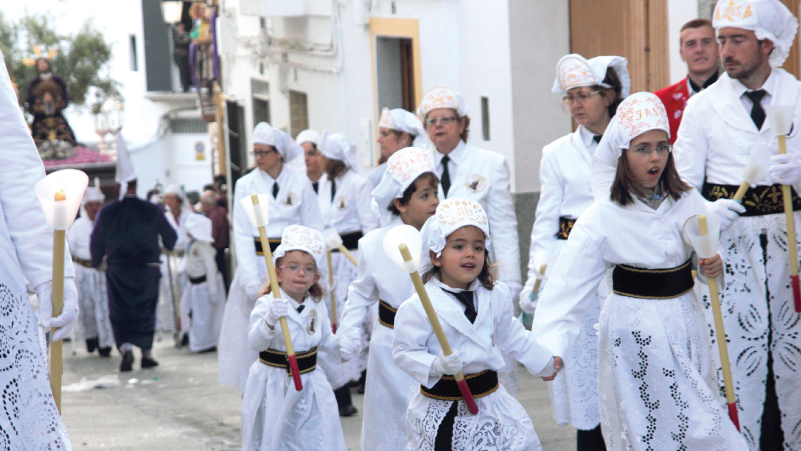 Participants
Participants
The Holy Week in Baena has many and varied protagonists. The processions are nourished by numerous participants wearing sui generis clothing of great antiquity and symbolic meaning. Nazarenes with unique hoods, bearers, biblical figures with faces, tunics and martyrdoms-Evangelists, Herod, Pilate, Judas and the Wandering Jew-, executioners -Roman soldiers in the garb of the Flanders thirds- and the white suits.
Jewish
The turbas of Jews mark the Baenense Holy Week. They form in Cuadrillas, they wear embroidered red jackets, neckerchiefs, carved metal helmets, striking feather dusters from which long horsehairs hang, an element that differentiates them between coliblancos and colinegros. Such is their relevance that they mark the character of the brotherhoods dividing them into black or white. There are eight white-tailed cuadrillas and eight black-tailed cuadrillas, who participate by accompanying the processions with the sound of their handmade goatskin drums. In the same way, they are the protagonists of some of the most popular images that are dramatized during the processions.
 The scenes
The scenes
Del Evangelista. A Jew from behind tries to see what the Evangelist writes suspiciously on a tablet, at one point, the Jew takes a leap, surprising the Evangelist, giving the two a few short jumps that are known as “the dance.” It is also popularly known as “scare,” it is performed in all the processions in which the mob participates.
La venta de Jesús. Two Jews approach Judas Iscariot to convince him to sell Christ. After refusing twice, the third time he accepts it and runs into the crowd with coins in hand.
Prendimiento. Judas, before the mob, and with a lantern in his hand, accompanied by two Jews, or a Sayon, pretends to look for Jesus up to three times between the Image of Jesus and the Turba, on the third time and with great nervousness he indicates that he has found it, at that moment the turba of Jews approaches, arresting Jesus with a great thunder of their drums.
Sorteo de la túnica. On the night of Good Friday, several executioners make a bet with the tunic of Jesus.
Abrazo de los Apóstoles. The person who embodies Saint Peter embraces the Image of Jesus, then passes the embrace to another of the Apostles, who, formed in a row of one, pass the embrace from one to the other until they reach Judas, who, rejecting the embrace, takes refuge running and nervous in the mob of Jews.
Other representations are The Appearance of Jesus to Mary Magdalene, the Sermon on the Walk, The Washing of Feet and The Three Falls.
Echar cajas
During the early hours of the morning of Holy Wednesday, Jews, either alone or in groups, walk the streets of the town beating the drum continuously throughout the day.
Misereres
Liturgical act celebrated during Lent, in which a cuadrillas of Jews, brotherhoods or confraternities participate indiscriminately, parading in uniforms at the temple, and playing the drum in the case of Jews.
